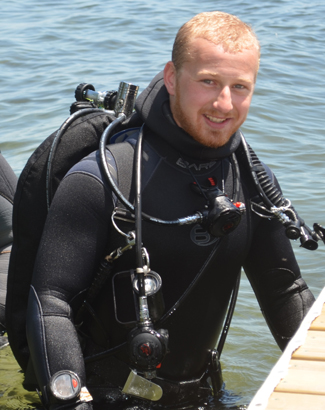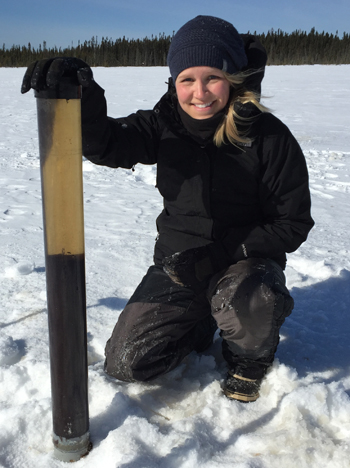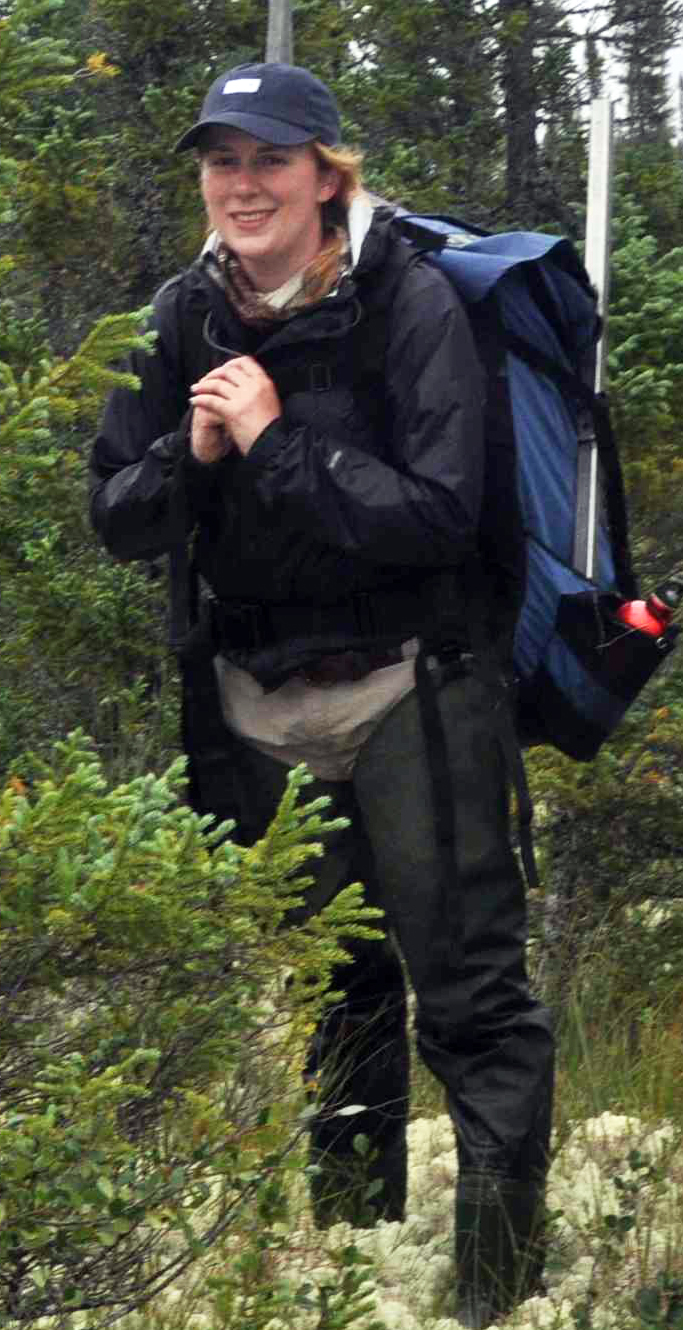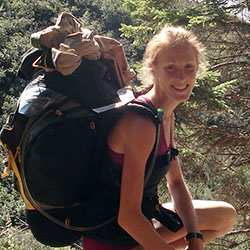
PhD

MSc

BSc

BSc

MSc

PhD

PhD

MSc

BSc

BSc

BSc

PhD

PhD

MSc

PhD

PhD

PhD

PhD


PhD

MSc

MSc

MSc

BSc

Bsc
Bsc

Bsc

Bsc

Bsc

Bsc

PhD

St. Lawernce Collage
Bsc

Assessing the response of metal contamination and remediation efforts of mining-impacted lakes in Sudbury.

I have a growing interest in Limnology and am currently doing my undergrad thesis on a recreational fishing lake, using midge remains to identify past oxygen profiles.

Exploring the urban/rural environmental differences between pre-industrial and post-industrial Southern Ontario Lakes.

Assessing long-term environmental trends in Ontario lakes that support Lake Trout.

Diatom-based assessments of lakes in the Athabasca Oil Sands Region (AB) exposed to industrial pollution, climate change, and forest fires.

Using diatom assemblages to assess the effects of climate change and contaminants in lakes surrounding ConMine, Yellowknife, NWT.

Understanding changes in subfossil Cladocera in response to multiple stressors at Pigeon Lake.
Using chironomid assemblages to reconstruct long term deep water oxygen conditions in Limerick Lake.
Investigating long-term changes in Chrysophyte assemblages in lakes in the Adirondacks

Tracking the long-term development of shallow oligotrophic lakes using algal assemblages within the context of multiple environmental stressors.
Analyzing changes in Chrysophyte species in the Adirondacks (Wolf Lake, NY).

Observing changes in cladoceran assemblages from pre-industrialization to modern day, in lakes in the Adirondacks.

Assessing changes since Pre-industrial times in cottage lakes in Algonquin Park.

A paleolimnological investigation of food-web and carrying capacity changes in Okanagan Sockeye Salmon nursery lakes.

Investigation of the impact of warmer climatic conditions on aquatic life in a small kettle lakes from northern Ontario.

Working in close collaboration with PEARL at Ottawa U with Prof. Jules Blais http://mysite.science.uottawa.ca/jblais/page-4.html

Working in close collaboration with PEARL at Ottawa U with Prof. Jules Blais http://mysite.science.uottawa.ca/jblais/page-4.html

Arsenic Geochemistry in a Historically Contaminated Lake: Paleolimnological Examination of Moira Lake, Ontario,Canada.

Austin- A chironomid based reconstruction of deep water oxygen conditions over approximately 200 years in Loughborough Lake, Ontario.

Observing changes between pre-industrial and modern-day cladoceran assemblages in reference lakes at the Experimental Lakes Area (northwestern Ontario).

Using diatom assemblages to examine the hurricane history of Grape Tree Pond, a coastal lagoon in Jamaica.

Looking for effects of climate change on high-altitude Andean ponds in Ecuador using diatoms as a paleolimnological indicator.

Assessing the influences of climatic change on ecological changes in North China lakes during the last two millennia using sedimentary diatom assemblages.

BSc
BSc

Using paleolimnological indicators to track the effect of highway construction on sub-arctic lakes.
Using chironomids to track deepwater oxygen changes in Osoyoos Lake, B.C.

Analyzing the environmental impact of Double-crested cormorants and Ring-billed gulls on Lake Ontario bird ponds using paleolimnological techniques.
Investigating the timing and potential drivers of the shift from unicellular to colonial scaled chrysophytes (specifically Synura petersenii) in sediment cores from minimally disturbed lakes in the Adirondacks.

Using chironomid assemblages to assess the past deep water oxygen concentrations of Tadenac Lake, ON, to determine if changes over time have impacted the Lake Trout population.

Holocene perspective of changes in cladocera from Wolf Lake in the Adirondacks.

Timing of the shift from unicellular Mallomonas taxa to colonial Synura sphagnicola chrysophytes in a minimally-disturbed lake; Adirondack Lake.

Assessing past deep water oxygen availability of Peninsula Lake (ON) using chironomid assemblages.

Investigating the application of chironomids as an indicator of past oxygen levels.
Proud- Diatoms as indicators of environmental and climatic change in High Arctic ponds. Specifically in the Cape Herschel area.
Working in close collaboration with PEARL at Hutchinson Environmental Sciences Ltd. Kitchener, ON
Currently an assistant professor at York University

Heterogeneity in northern climate trends: Assessing the role of glacial modulation.

Predicting the occurrence of nuisance algal blooms (cyanobacteria) in Lake St. Francis through the study of watershed and limnological features, as well as GIS derived metrics.Makenzie
The effects of calcium decline on cladoceran assemblages of Crosson Lake, Ontario: Have low calcium conditions favoured Holopedium glacialis?

Looking at the relative abundances of diatoms throughout the last 10,000 years of sediment accumulation at Lake of the Woods and to determine whether changes in assemblage composition track the environmental history of lake development including changes in climate?.

The use of paleolimnological techniques to track the impacts of Dorset-Paleoeskimos on a freshwater lake near Port au Choix, Newfoundland, Canada.

Analyzing water quality in Lake Simcoe through the Holocene using diatom assemblages.

Analysis of macroscopic charcoal to characterize fire history in the Adirondacks and assess the utility of charcoal morphotype analysis.

SWEP
Assessing ecological changes and their impacts on mercury transport in Northern Boreal lakes using sedimentary diatom assemblages.


Understanding changes in water quality and quantity from northwestern Ontario over millennia: A multiproxy paleolimnological perspective.
Aquatic invertebrates and environmental change.

Long-term response of chironomids to environmental change in the Athabasca oil sands region.
Determining the role of climate on recent changes in algal communities in boreal lakes.

Assessing the impacts of mining on heavy metal concentrations and chironomid assemblages in a Sudbury region lake.

Assessing possible climate-related shifts in pollen and charcoal assemblages in Wolf Lake (Adirondack Park, NY) during the Hypsithermal.

Using Chironomid Assemblages to Asses the Impacts of Uranium Mining on Surrounding Lakes, in Northern Saskatchewan.

Acidification and climate warming: a multi-proxy paleolimnological study assessing the response of Adirondack (NY, USA) lakes to regional anthropogenic stressors.

Using paleolimnology to assess changes in chrysophyte species assemblages in Wolf Lake (NY, USA), and Adirondack 'Heritage Lake'.

DDT use at the '67 World Expo.
Spatial and temporal trends in contaminant concentrations in Great Lakes fishes, with emphasis on identified areas of concern.

Diatom assemblages in Sverdrup Pass pond sediments.

Analysis of Cladoceran species assemblages in Wolf Lake (NY, USA) to assess fluctuations in lake water Ca levels related to industrial acid deposition.
Harris-Assessing the impacts of seabird-derived nutrient inputs on islands in the Great Lakes, using sedimentary diatom assemblages

Analysis of diatom species in Wolf Lake (NY, USA) to assess ecological responses to mid-Holocene climate warming.

Patterns in diatom and chrysophyte assemblages across a gradient of water depth in an Adirondack Lake.

Using chironomid-based paleolimnology to track recent environmental change in the Ecuadorian Andes.

An analysis of past climate in Eastern Quebec using preserved diatom assemblages in lake sediments
Impacts of acidification on the movement of mercury from sediment into biota.

Cladoceran communities of small, shallow lakes. Website
A paleolimnological investigation of ecological responses to climate change and a piscivore manipulation in Mouse and Ranger lakes, Ontario
A paleolimnological investigation using diatom assemblages to disentangle the long-term impacts of acidification and calcium decline in softwater lakes of Central Ontario, Canada.

Diatoms as indicators of recovery from hyper-eutrophication in high arctic ponds.


A paleolimnological investigation of eutrophication and recovery in Lake Washington (Seattle, WA).
A paleolimnological assessment of the response of Arctic lakes in the Mackenzie Delta uplands (NT, Canada) to failed drilling-mud sumps.
Diatoms as a paleolimnological confirmation of climate change in the Adirondacks, New York.
An Evaluation of Climate Change and Eutrophication in a High Arctic Lake.
A paleolimnological investigation of chrysophytes and chironomids in the Experimental Lakes Area.

Assessment of water availability of southern lakes in the Winnipeg River Drainage Basin over the past 2 Millennia to determine the susceptibility of this basin to synchronous droughts.

A paleolimnological assessment of the impacts of anthropogenic disturbances on chrysophyte diversity in the Winnipeg River Drainage basin.
Paleolimnological investigation of diatoms in dead zone lakes of the Western Canadian Arctic.

A paleolimnological investigation of Cladocera in the dead zone of the Western Canadian Arctic.


Calcium effects in softwater lakes: Investigating changes in zooplankton community structure.

Analysis of drought susceptibility and water variability of northern lakes within the Winnipeg River drainage basin over the past two millennia to determine synchronicity water levels.

Paleolimnological assessment of environmental changes occurring on Pim Island, Nunavut, High Arctic Canada
Paleolimnological diatom reconstruction of water-quality changes related to multiple stressors in Lake Simcoe, Ontario.

A diatom-based paleolimnological investigation of environmental change in Lake of the Woods, Ontario.

A paleolimnological investigation of changes in cladoceran size structure in Lake George, Nova Scotia due to recent anthropogenic warming.

A paleolimnological investigation of diatoms in the dead zone of the Western Canadian Arctic.

Determining the characteristics that define the ecotone boundary between benthic and planktonic diatom communities in boreal lakes in North-western Ontario.
A paleoecological study of fire regime during the Holocene in St. Lawrence Islands National Park, Southeastern Ontario using the charcoal record.
Paleolimnological Investigation of Holocene Level Climate Regimes in Lake 239 (Experimental Lakes Area, NW Ontario).

Tracking the Effects of Acidification and Recovery on Aquatic Invertebrates in the Wawa and Sudbury Regions.
Reconstructing Holocene fire history in Southeastern Ontario through an investigation of sedimentary charcoal.

Assessment of environmental changes in Halifax over the last 150 years using sub-fossil diatom assemblages.
A diatom-based paleolimnological investigation of long-term climate change in Canada's arctic tundra.
Assessment of the extent of biological recovery of Big Moose Lake, NY from acidification using chrysophytes as paleoecological indicators.

Scaled chrysophytes as indicators of taste and odour water issues in Ontario lakes.
Contrasting the Effects of Nutrient Additions Versus Climate Change in Forrest Island, Lake of the Woods, ON

Assessment of scaled Chrysophytes in Arpin Lake from pre-industrial to recent times (NW Ontario).

Aquatic osteoporosis in the Experimental Lakes Area using cladocerans as an indicator.

Climate change effects on diatom community structure in northwestern Ontario.
Multiple generations of interglacial lake sediment preserved beneath the Laurentide Ice Sheet: a paleolimnological reconstruction of Lake CF8, Baffin Island.
Fire-climate relationship at the forest-prairie ecotone in Alberta, Canada.
Diatoms and scaled-chrysophytes as indicators of biological recovery from acid rain in lakes near Wawa, Ontario.
Diatoms and scaled chrysophytes as indicators of biological recovery from acidic deposition in Sudbury, Canada.
A paleolimnological investigating of a possible calcium concentration tipping point in Cladocera communities in Nova Scotia.

The extent of biological recovery of Big Moose Lake, NY from acidification.

Paleolimnological reconstructions of long-term sockeye salmon population dynamics in the U.S. Pacific Northwest, British Columbia and Yukon Territory in relation to human and natural forcing mechanisms.
Assessment of water quality in Nova Scotia using diatoms as paleoecological indicators.
A high-resolution fossil diatom record of climate and environmental change in equatorial East Africa over the past 21,000 years.
Diatoms as indicators of environmental change from three distinct ecosystem types in the Canadian High Arctic.

Drought variability in the North American Great Plains during the last 1500 years.
Assessing the relationship between sedimentary charcoal, climate, and recorded fires events
A spatial scale approach to the analysis of primary and secondary transported charcoal.
Climate and fire dynamics.

Tracking past sockeye salmon presence in relation to oral tradition from a remote sub-arctic lake (Yukon Territory, Canada)

Impacts of Environmental Stressors on Lakes of New Brunswick, Canada: A Paleolimnological Assessment

The Effects of Zebra Mussels and Elevated Temperature on Zooplankton Assemblage in Two Eastern Ontario Lakes

Assessing Environment Change in three Atlantic Whitefish (Coregonus huntsmani) Lakes in Nova Scotia, Canada using Paleolimnological Techniques.
The Effects of Zebra Mussel (Dreissena polymorpha) Predation on Seasonal Phytoplankton Succession in Lake Opinicon, Ontario.

Fossil chironomids as indicators of environmental change in Russell Lake, Halifax, Nova Scotia, Canada.

Cladocera as paleolimnological indicators of recent warming in subarctic Canada
Assessing the Role of Epilithic Diatoms as Indicators of Nutrient Enrichment at Cape Vera, Devon Island, Canadian High Arctic
Chironomids: Indicators of hypolimnetic oxygen change in Nova Scotian Brook Trout lakes.
Aquatic invertebrates and climate change in Arctic and Subarctic regions.

|